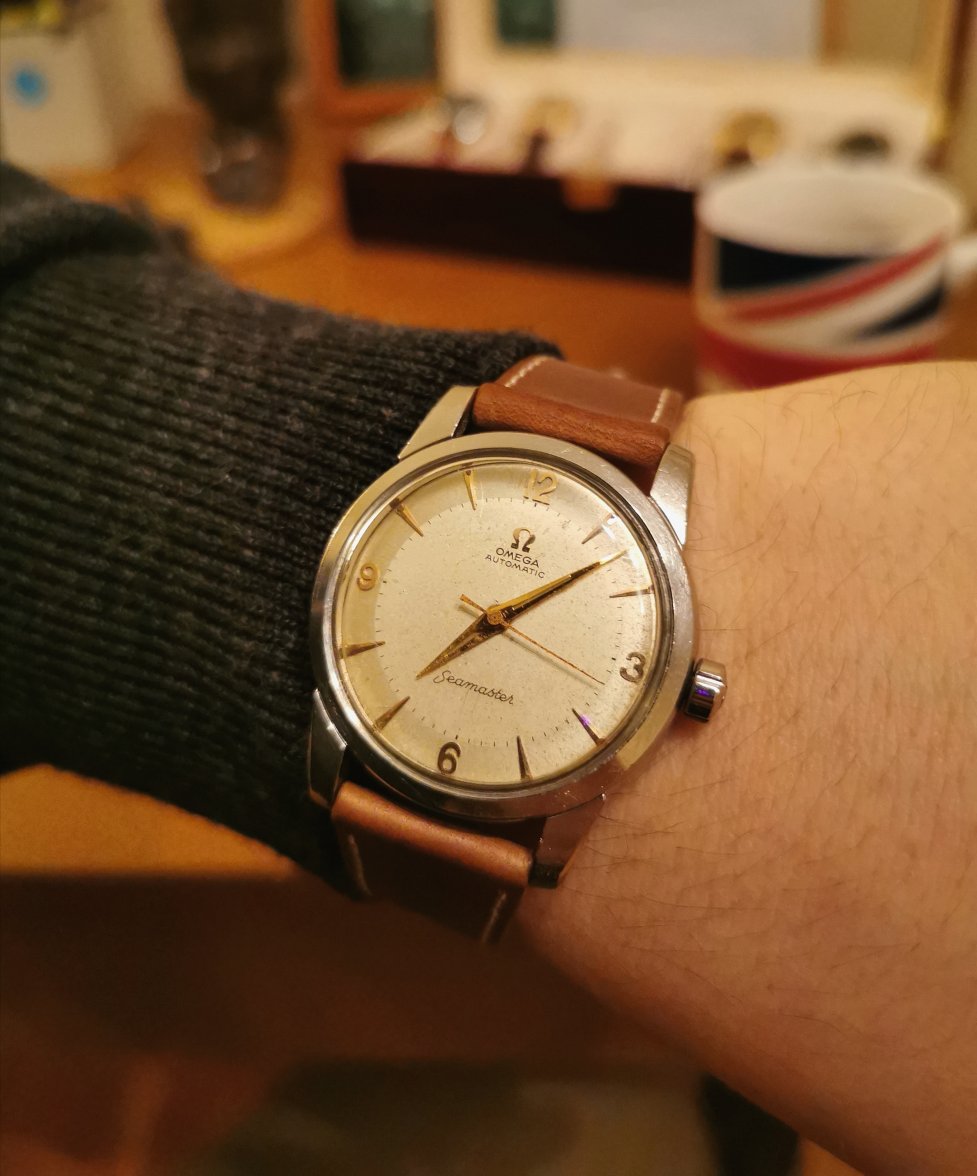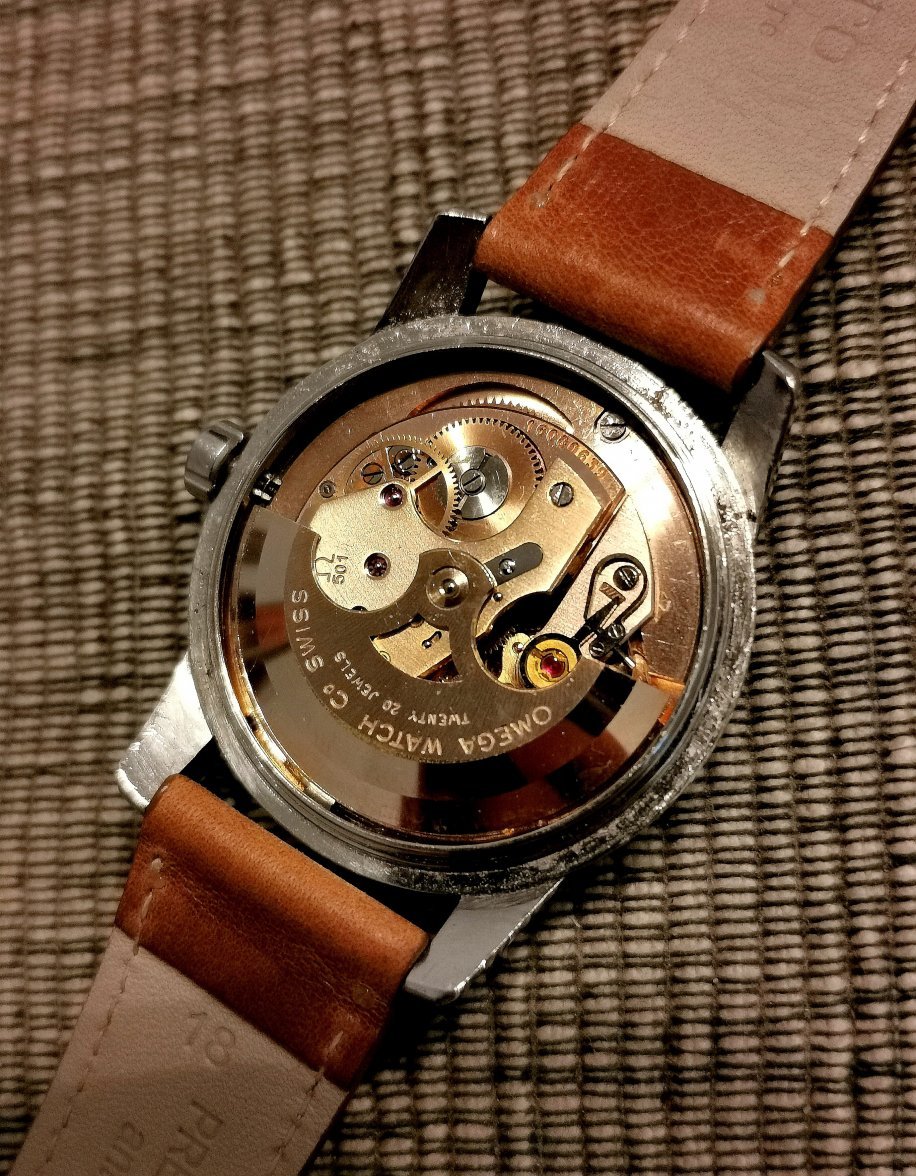Rudi99
·Hi everyone, another snowy icy day in Germany and I hope everyone is safe.
I would very much like to ask you all if anybody has had a similiar experience to mine in regards of power reserve on a vintage and recently serviced piece.
I am fairly new to the vintage game and have only around 4 vintage Omega pieces, including a 40s Rosegold ref. 2438 with a cal. 354, a Seamaster ref. 2767 also powered by a cal. 354, a C-Shape-Connie ref. 168.017 powered by cal. 564 and the watch in question, a Seamaster ref. 2846 powered by cal. 501.
So I was all happy to finally get my Seamaster ref. 2846 in steel after it was serviced by a watchmaker a close friend in the watch world trusts. It was part of the deal and I didn't have to pay for the service. The gentleman who sold me the watch paid for it.
So, just right after getting the watch, I realised the power reserve was way too short. The watch would stop after just 6 to 7 hours. I called my friend and took the watch back to our WM, who sincerely apologised and promised to have another look.
A week later the WM writes me and says I can come back and take the watch. I go there, and he tells me he inspected the piece again and there was just nothing wrong with it. He said he even wore the watch for a whole day and was sure the watch was fully wound and after 35 hours, it was still running.
I took the watch back, but only to see that the power reserve was now around 12 to 14 hours.
My other watches have not yet been serviced and they don't come nearly as close to the precision of the nearly serviced 2846 (+3 secs a day). They all however last for more than 35 hours.
I tried absolutely everything and turned the crown 40+ times and wore the watch an entire day but a power reserve of 14 hours is just too little. It pains me almost, as I really like this watch.
I took also a foto of the movement when I visited the WM last time.
My friend who is also a member went to really a great trouble to make sure I had the best experience with the watch and provided replacement parts for the 501 movement prior to it's service. I just don't understand what can be wrong with it as well. It looks really pristine.
Would anybody have any idea about what the problem could be?
Best,
Rudi
I would very much like to ask you all if anybody has had a similiar experience to mine in regards of power reserve on a vintage and recently serviced piece.
I am fairly new to the vintage game and have only around 4 vintage Omega pieces, including a 40s Rosegold ref. 2438 with a cal. 354, a Seamaster ref. 2767 also powered by a cal. 354, a C-Shape-Connie ref. 168.017 powered by cal. 564 and the watch in question, a Seamaster ref. 2846 powered by cal. 501.
So I was all happy to finally get my Seamaster ref. 2846 in steel after it was serviced by a watchmaker a close friend in the watch world trusts. It was part of the deal and I didn't have to pay for the service. The gentleman who sold me the watch paid for it.
So, just right after getting the watch, I realised the power reserve was way too short. The watch would stop after just 6 to 7 hours. I called my friend and took the watch back to our WM, who sincerely apologised and promised to have another look.
A week later the WM writes me and says I can come back and take the watch. I go there, and he tells me he inspected the piece again and there was just nothing wrong with it. He said he even wore the watch for a whole day and was sure the watch was fully wound and after 35 hours, it was still running.
I took the watch back, but only to see that the power reserve was now around 12 to 14 hours.
My other watches have not yet been serviced and they don't come nearly as close to the precision of the nearly serviced 2846 (+3 secs a day). They all however last for more than 35 hours.
I tried absolutely everything and turned the crown 40+ times and wore the watch an entire day but a power reserve of 14 hours is just too little. It pains me almost, as I really like this watch.
I took also a foto of the movement when I visited the WM last time.
My friend who is also a member went to really a great trouble to make sure I had the best experience with the watch and provided replacement parts for the 501 movement prior to it's service. I just don't understand what can be wrong with it as well. It looks really pristine.
Would anybody have any idea about what the problem could be?
Best,
Rudi
Edited:

